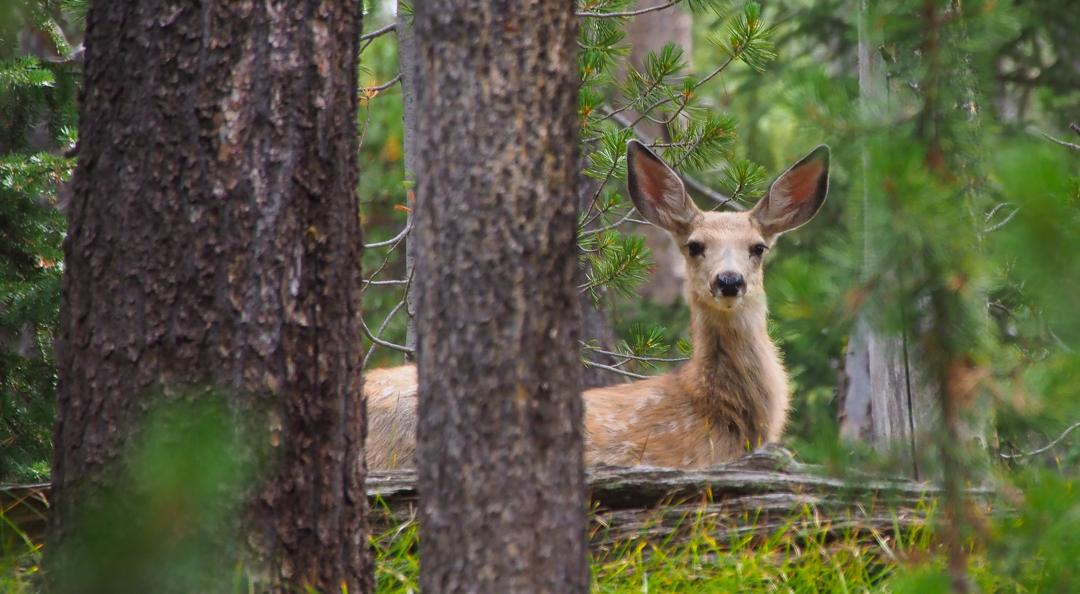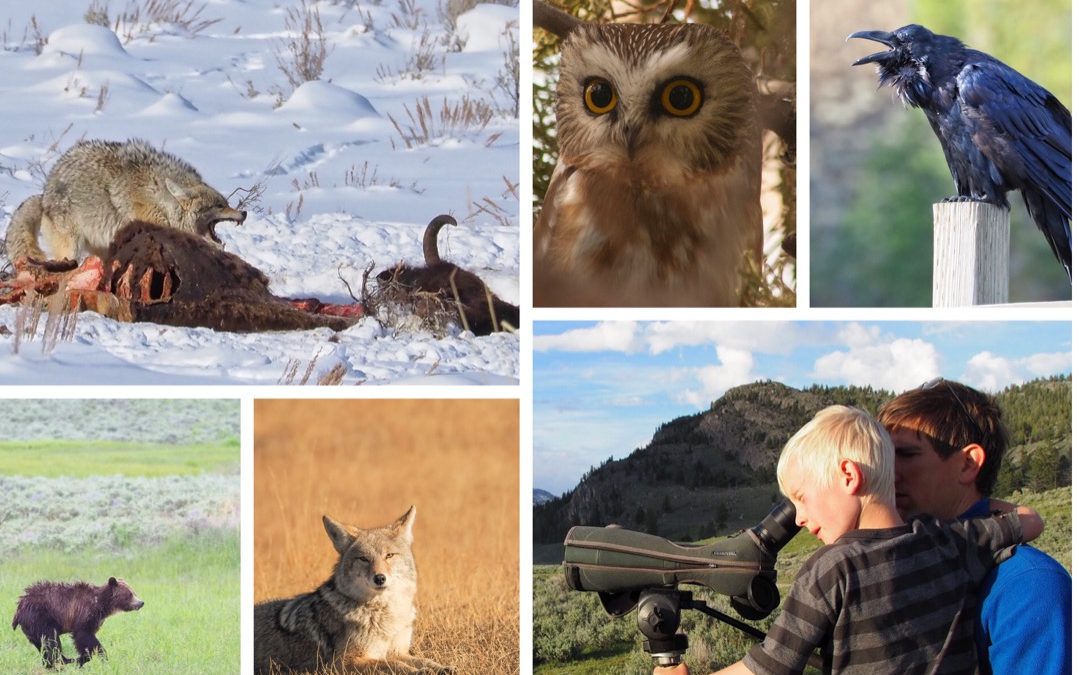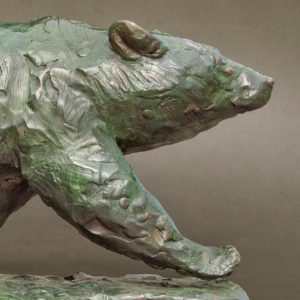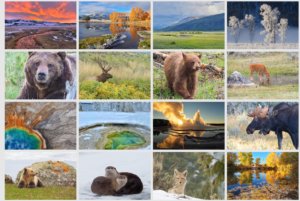What if we told you that there is a way of walking in the world that will change your life forever?
There is! It’s tuning in to the fascinating world of animal language.
What if you could:
- Tap into an ancient method of reading nature that would enable you to regularly engage with the animals around you in a way you never imagined?
- Better understand animal behavior, and share your knowledge with friends, family, children or grandchildren?
- Be in just the right place at the right time for stunning wildlife photos?
- Regularly experience ‘National Geographic’ moments?
- Enjoy an increased sense of peace and well-being from a newfound connection with wildlife?
- And so much more?
You can! Living a lifestyle that is connected to nature and wild animals is easier than you think – and you can do it anywhere.
Really? Anywhere? “Come on,” you say. “You live in Yellowstone, with elk and bison and bears in your yard—it’s easy!” The truth is we haven’t always lived in Yellowstone, and we travel all over the world. Many of the things we teach work anywhere. Yes, even in the suburbs, even in Manhattan. We use these techniques everywhere we go. And you can too! Coming to Yellowstone? Traveling on safari to Africa? Going to the local city park?
No matter where you live—whether urban, rural, or suburban—the non-human inhabitants around you are communicating with each other all the time.
Once you learn how to tune in to these conversations, you’ll realize that your wildlife neighbors are saying all kinds of fascinating things – like who the proverbial ‘wolf’ is in your backyard: it could be the neighbor’s cat, or a bobcat roaming the hedges that you never knew was there, or a hawk searching the treetops for its prey. Or it could be you! Once you’re aware of the conversation going on, you can join it, and along the way change the way you see the world around you.
It starts with knowing your neighbors. Your wildlife neighbors, we mean; rabbits, squirrels, songbirds, birds of prey, deer, coyotes, bobcats, (fill in the blank where you live). Do you know what the birds in your neighborhood are saying about you? Believe me, the animals and birds that live near you know who YOU are, and they’re talking about you, all the time!
Did you know that listening to the call of a chickadee can tell you there’s an owl perched nearby? Or that the call of a raven can tell you there’s a carcass (that might have wolves and bears on it) nearby? Or which coyote vocalization is the word for “wolf”?
While it seems like knowing these kinds of things is akin to magic, it’s really not. Instead, it’s simply learning how to pick up on the signs.

Here’s how to begin paying attention to animal language.
You’ll get the best results if you find a nearby outdoor spot where you can practice this 15-30 minutes at a time on a regular basis.
Step 1: Get rid of distractions
Before you leave the house, the office, or the vehicle, put your phone in airplane mode, stick it in your bag, or turn it off. Yes, we know you probably use your phone for pictures, notes, and calendars. We do too. But you can’t be present and aware enough to pick up on the signs in your environment if you are distracted by a device; cultivating mindfulness when outside is a key part of mastering these skills. It will take only a couple minutes to put it away/shut it off and will make a huge difference.
Plan to go outside by yourself, if possible, or if you are with others, try to do so without speaking as chatter can be as distracting as a device. If it’s the route you normally take your dog, you might consider starting without the dog for a few days.
Step 2: Enter the outdoors with intention
Next, take a deep breath before you open the door. You want to leave the inside environment as if you are ‘entering’ someplace special. Just as if you were going into a library, a sacred space, or a museum, enter this outside world gently. This will prime your senses to notice new things, and will also keep you from scaring away things you might want to notice.
As you step out (of the house, the car, the office) be fully aware. Take one or two steps then stop for a few moments, or even minutes. Then, walk slowly and quietly, or stand in place, and look around you as if it’s a place you’ve never been before. Pretend that your eyes are a fisheye lens, seeing everything at once (most of us use only the narrowest of angled vision–the portion with the highest focus). Imagine that your ears are as sharp as an owl’s and listen for the most subtle sounds you can detect in the local environment.
How many different animal sounds do you hear? What animals do you notice?
If you don’t notice anything of note right away, don’t panic! The point is to start cultivating the habits of success when it comes to detecting area wildlife, and look at the world around you with new eyes. It may be that you need more time in your outside spot, or need to find a better location. But don’t assume that because you see ‘nothing going on’ that there is nothing to learn and observe. ‘Nothing’ is still ‘something’ and you may find that as time goes on, your shift in behavior allows other creatures being more comfortable in your presence. Take your time, and wait to progress to the next step until you’re ready.
Step 3: Get to know your animal informants
Now that you’re clued in to some of the things going on in your environment, it’s time to more closely observe the wildlife you see.
Last time you noticed some of the animal inhabitants in your outdoor spot (if you didn’t, you may give it another day or so). Today, check in with them like you would get morning memos from your coworkers, or the latest news from Facebook. Do you see the same animals again? Do you hear or see different animals? It doesn’t matter if you know their actual names, or not. The point is that you notice them! These are your animal informants.
Each time you enter the same outdoor environment, see if you hear the same sounds in the same places, or see the same animals. Form a mental map of where the different animal sounds are. Did you notice anything that is the same? Anything different? What does the sparrow do when you see it in your yard? Is it calmly foraging for edibles in the grass? Is the squirrel chattering from a tree? Start to notice patterns in behavior: what do those deer do when they are just grazing? What does it look like when an animal is traveling? Roosting? Bedded down?
It might help to write down what you see, because the next step is to start to track changes in “normal behavior.” At this point it’s okay if you don’t know how many ‘dee’s’ a chickadee uses to signify different threats (although that’s something we teach in our e-course): the important thing is that you notice regular behavior patterns so you know when something changes.
Using this kind of observation is exactly how we discovered a bull snake raiding the robin’s nest in our lower yard.
We were used to the robin’s normal behavior and sounds, so that when we heard their short, chirping alarm call repeated over and over in a frantic way, we knew something was wrong. Sure enough, we followed the sound and found the snake just as it was devouring one of the baby robins. Gruesome, yes, but a wild encounter we would have entirely missed had we not been paying attention.
It’s okay to take a few days to try this step, to notice changes, before continuing to the next step.
Step 4: Ask questions
Here’s where you start to become a wildlife detective. Why are the animals you see behaving the way they do? Watch them, ask questions and then follow up to find out why. You’ll discover some amazing things, like one of George’s students who discovered a bobcat was sneaking around her hedges, or how the chickadees clued us in to a tiny northern saw whet owl in the juniper tree along the driveway.
Did the robin change it’s tone? Did the deer spook and run? This is when you start to ask why. This animal did something different: Why?
Do they change behavior when you come near? What happens if you sit in place and watch quietly? What happens if you begin to move?
Do the animals and birds act differently if the neighbor’s cat comes into your yard? Or if you are walking with your dog?
Noticing patterns in behavior–and especially when that behavior changes—is also how our friend and photographer Brad Orsted found and photographed a northern Pygmy owl in his backyard. Here’s what Brad had to say about the encounter:
“While cleaning up after a recent heavy snow, I heard the Steller’s jays and Clark’s nutcracker alarm calling from some aspens. This is not uncommon with cats in the neighborhood but it persisted and intensified, so I went to investigate.
I saw a small lump in the saplings below the now hysterically alarming birds that looked like leaves and fall debris. Grabbing…a camera with a good zoom lens, I snapped a few pics of the brush then zoomed in on the back of my camera to see what it was.
My mind couldn’t process what I was looking at but I knew it was a Northern pygmy owl! The owl had a pine grosbeak it just killed. No wonder my resident flock was going crazy.”
Repeat checking in on these informants. You’ll probably begin to notice how your actions impact their behavior. We’ve noticed that we get different amounts of “dees” thrown at us in the chickadee alarms in cases where we have the dog with us or not, whether we are walking with friends or family versus when there is a bird-hunting hawk around the area, etc.
Step 5: Practice and go deeper
Time to practice what you’ve learned!
Hopefully you have discovered some new, local inhabitants of your area and learned more about how tuning in to animal language can tell you what’s happening in their world.
The fun part is that this is just scratching the surface of what you can discover about your wildlife neighbors. What’s next?
Test your skills in a different spot.
Now’s the time to try these techniques in someplace different, and see how quickly you can pick up on what’s going on in the animal community around you. You can try these techniques just walking from the parking lot into the grocery store, or in a new park location, or just traveling about daily business.
We had the experience of going back east and hiking with family one day only to encounter a fiercely vocal Carolina wren perched about a foot off the ground on the edge of a drop-off toward the Potomac River. Realizing that this was some sort of alarm behavior, we took a peek over the embankment only to discover a cat that was completely out of view to us was creeping along the shoreline.
Try a ‘sit’
Try the ‘sit spot’ model taught by Jon Young where you sit still and stay in one place 30 minutes or more, a few different times over several days. If possible, alternate going early and late in the day, when its sunny versus a little rainy/snowy and overcast–all of these things and more will impact what you find around you.
Take it to the next level
If you want to know more about how to interpret the nuances of animal language (at home, or in Yellowstone or beyond), like:
- How to see the landscape as an animal does
- How many ‘dee’s’ a chickadee uses when they spot a threat animal versus a human with a dog, and how to interpret this kind of language in other species
- How to know when a bison fight is about to happen many minutes before it actually does, or that there’s a bear searching for elk in the sagebrush
- How to know instantly that there is an eagle or a hawk flying overhead
- How to know there’s a carcass in the area before anyone else does
- And much much more
…then you might consider taking the e-course Eavesdropping on Wild Conversations: Decoding the Secrets of Animal Language for Ultimate Wildlife Encounters. For the first time outside of an in-person course or lecture, George is sharing a lifetime of knowledge gleaned from wildlife observation and over 30 years of teaching and guiding others to unforgettable wildlife encounters. We’re so excited to make this knowledge available to a broader audience. Read more about the course here.
Not ready for a full course? Check out the free webinar Secrets of Animal Language: How & Why To Tune In To Wild Conversations.
Be sure and send us an email or drop on over the Facebook or Instagram to let us know what you find!



